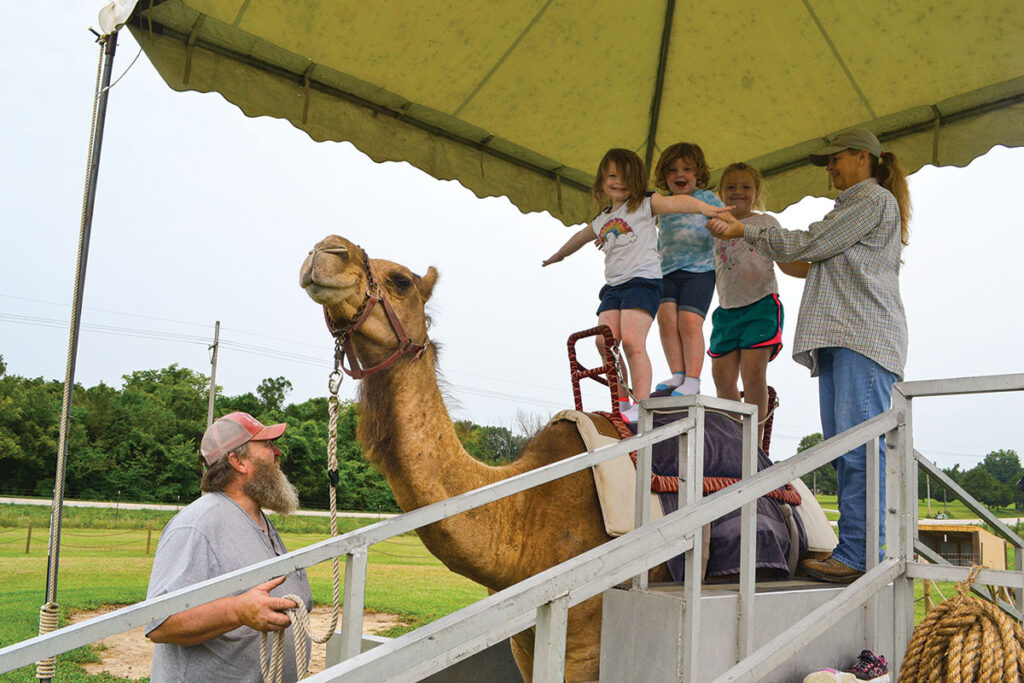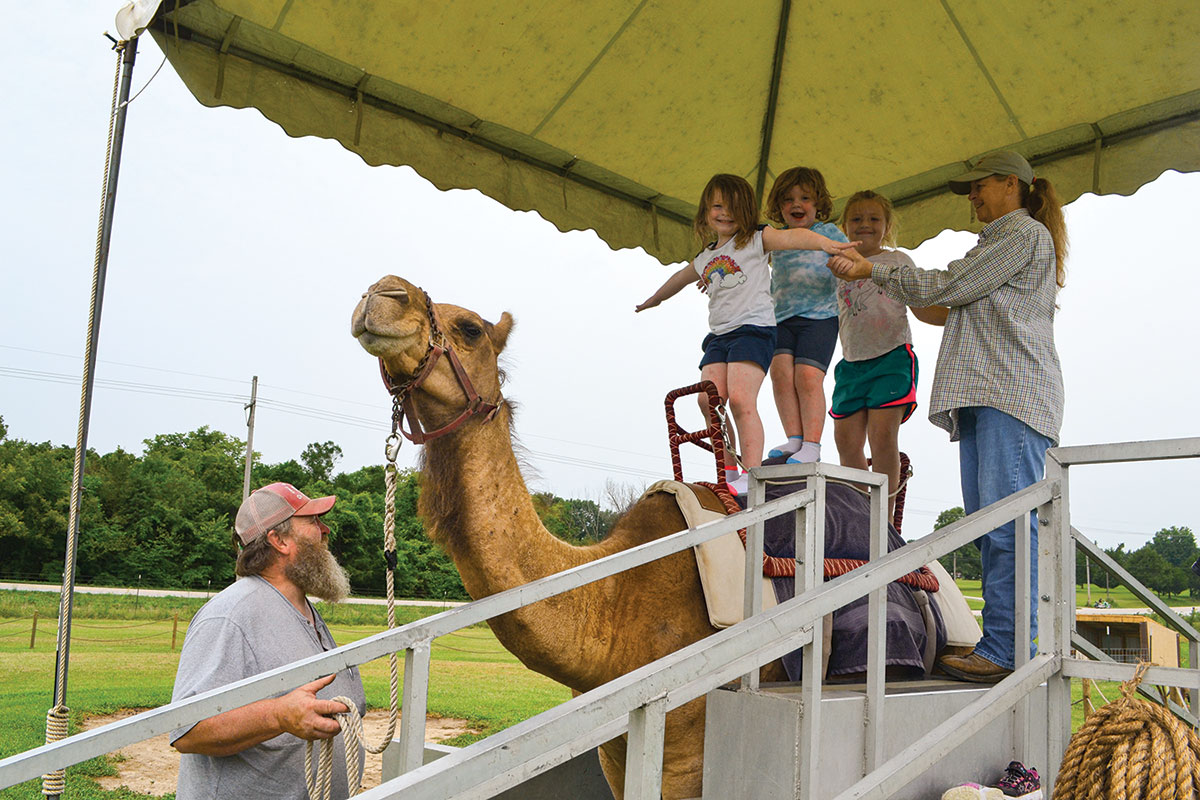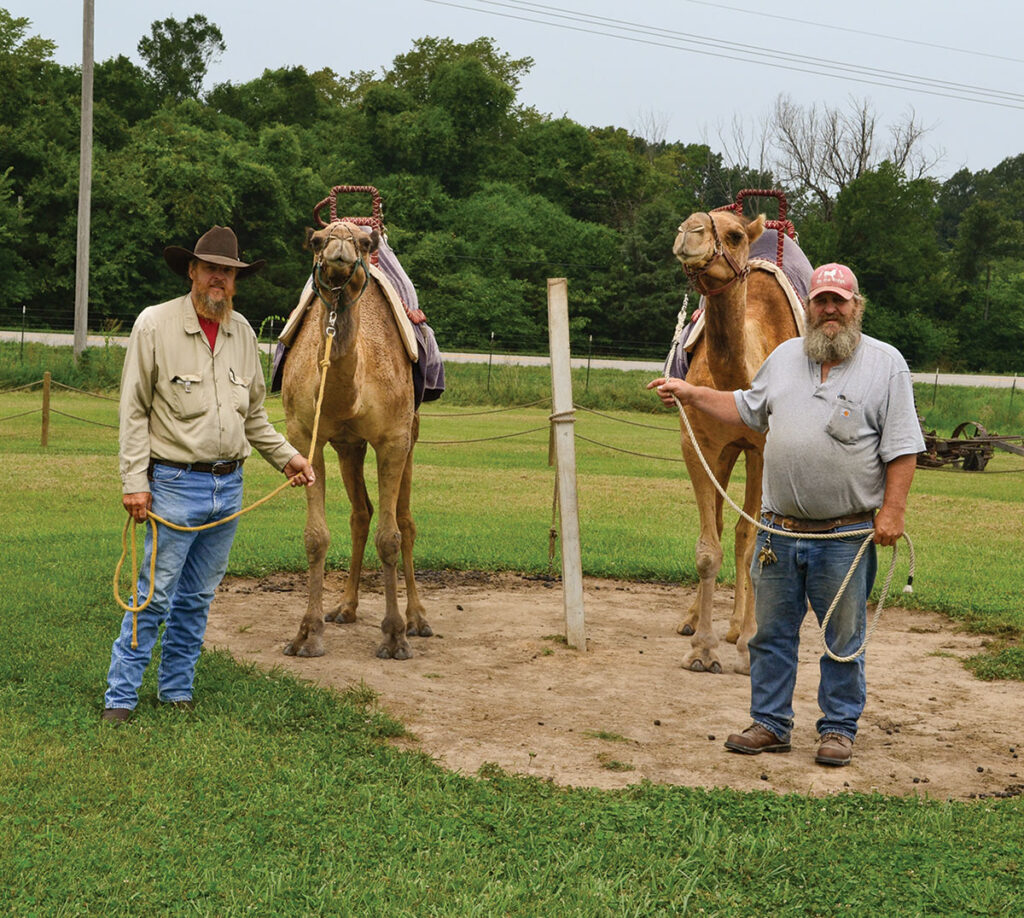
The Malchow family has been raising and training camels for generations
URBANA, MO. – For more than 40 years, brothers Chip and Rod Malchow have raised camels in the Ozarks. Growing up in Nebraska, their father Butch Malchow also raised exotics, including camels, buffalo, mountain lions and zebras, and that original attraction is still alive and well with the brothers.
Chip and Rod have lived in the Dallas County, Mo., area near Urbana, for the last several years where they have raised and trained camels to provide rides for children to a great many circuses and zoos. Rod has also provided camels for various church functions, such as live Christmas nativities and VBS celebrations.
Like so many others, however, the brothers have found their business practices to be significantly impacted by COVID-19 restrictions, which have severely restricted public and private activities with crowds and indoor gatherings, effectively shutting down circuses, zoos and other animal attractions.
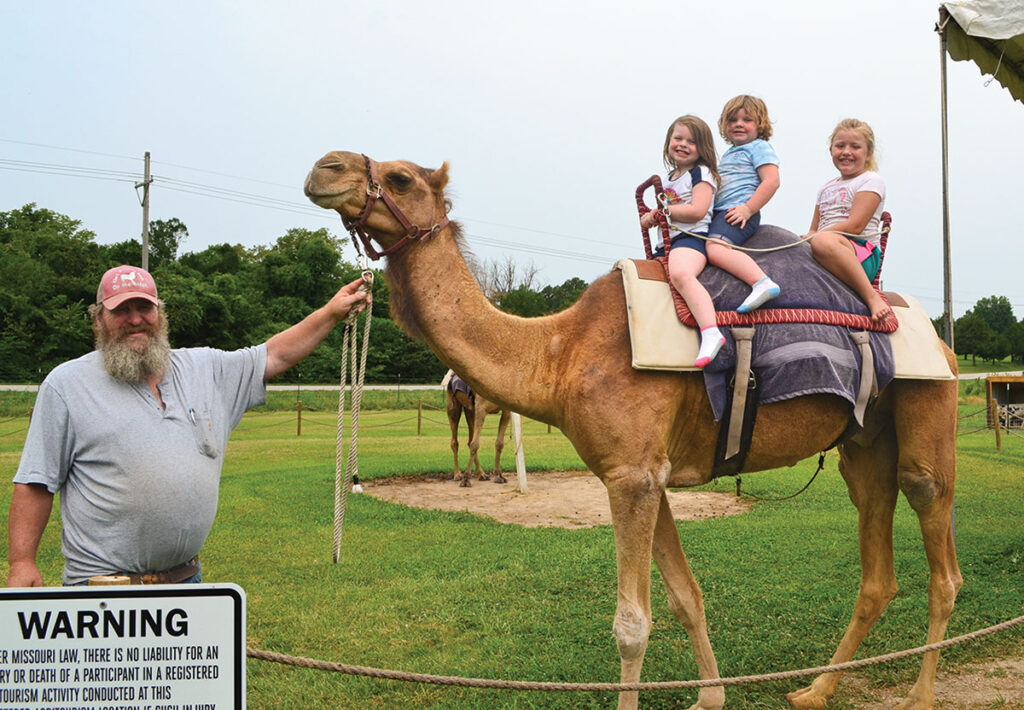
“We’ve been trying something new,” Chip explained from their newest location along rural Missouri 65, between Buffalo and Urbana, where the sign on the fence reads, “Camel Rides Daily, 10 a.m. to 5 p.m., Weather Permitting.”
Those traveling on Missouri 65 in the area could have caught a glimpse of a few camels grazing in a pasture along the roadside, but 2021 is the first time the brothers offered rides in such a public manner.
“The circuses and zoos, like so many other places, have been slow to open back up right, so we thought we’d try this,” Chip explained while encouraging Dean and Em, a pair of Dromedary camels comfortably lounging in a nearby corral. “Camels are browsers, more like goats than cattle,” Chip explained of the camels. “They’d rather eat trees and bushes like multiflora rose, weeds, depending on the time of year. They like to wait until they’re ripe and then they’ll even eat locust trees, despite those thorns. We feed them hay and grain, as well but we rotate them, pasture to pasture, to take care of the brush.”
The brothers keep approximately 25 Dromedary camels, the one-hump breed, on their 200 acres. They find the Dromedaries to be more even-tempered than the double-humped Bactrian camels, which are also the ones have helped to give camels their reputation for spitting.
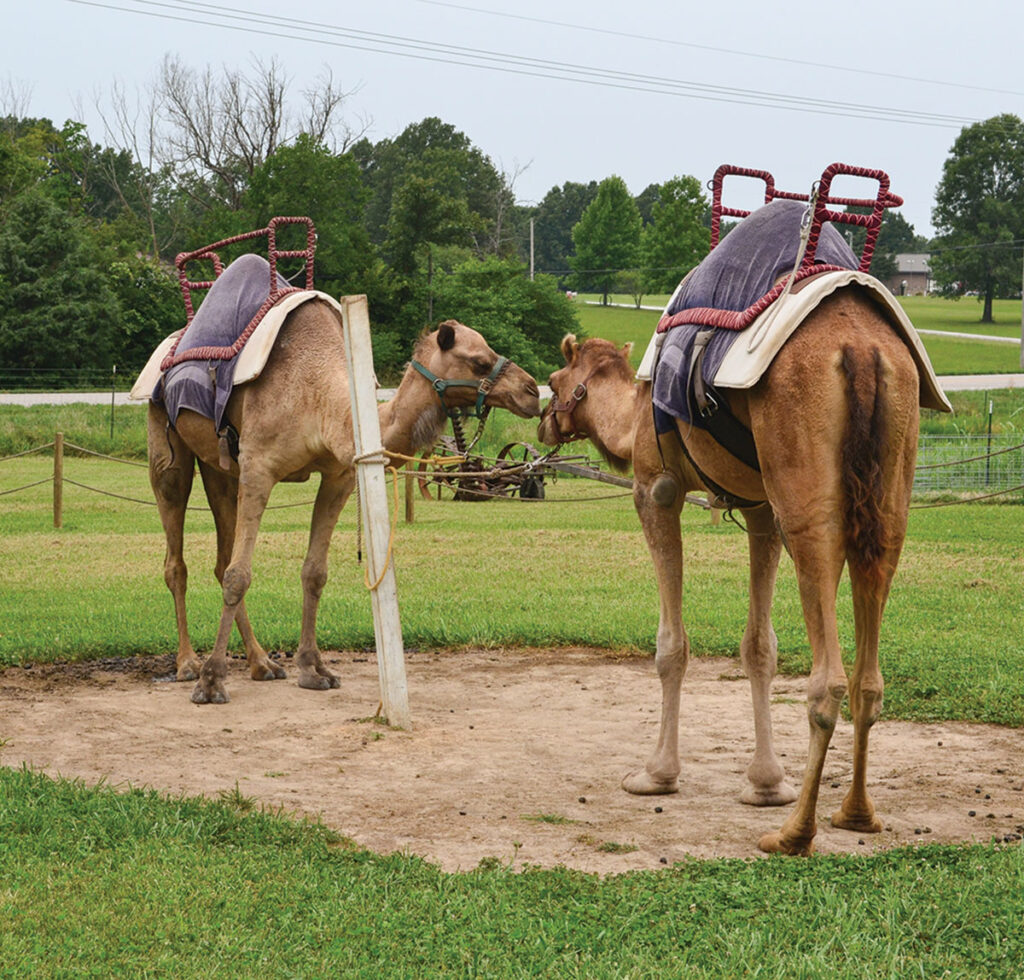
“All camels, like sheep and goats, chew the cud,” Chip explained. “Regurgitating their food is part of their digestive process. Bactrians are more like llamas and they tend to spit as their saliva blows back. The Dromedary breed is not as bad about that.”
Chip and Rod also raise about 50 head of cattle, including a variety of breeds, such as Scottish Highlanders, White Parks and Belted Galloways. They also have goats and sheep, a few of which are also on display nearby as a small petting zoo for any small children who stop by for a camel ride. They also have a pair of Percheron draft horse, hitched and ready to provide wagon rides.
In addition to the camel rides and training, Chip and Rod breed and sell camels. They started with wild camels caught in Australia. Wild camels were originally brought to Australian from Pakistan and Turkey during the early 1900s as work animals, and turned loose when the work was completed.
Camels, the brothers said, are easy-keepers.
“After so many years in this, we tend to do our own veterinary care. Fortunately, camels don’t require a great many vaccines. We consult a veterinarian on occasion when necessary and also vaccinate if a particular zoo requires it but generally, camels are pretty low maintenance.”
Chip said great many people still believe in some of the common camel myths.
“The hump on their back is not full of water,” he said with a patient smile. “It’s just fat and they will dehydrate in the heat, just like a human. Some folks believe camels don’t sweat but they will in humid conditions. They do have the ability to raise and lower their own body temperature by as much as four degrees so they can stand the heat better than we do. They acclimate well to their environment so a camel in Missouri will grow more hair, a thick wool actually, than a camel in Texas.
“I guess, over the years, we’ve just gotten used to them. They are a lot of fun. We like to say horses are hay burners while camels are hay earners. If you had to, you could turn a camel lose in the woods, and he’d survive,” Rod said. “Not so with most horses. The camels do a good job of paying their own way.”
